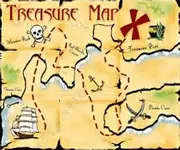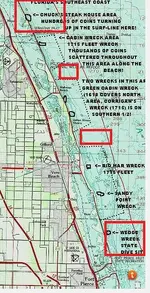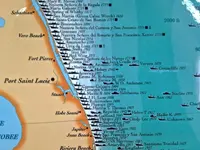Federal Law
Treasure hunting first falls under the jurisdiction of federal law. The Marine Protection, Research and Sanctuaries Act of 1972 designates underwater sanctuaries to protect natural and historical resources. The Florida Keys National Marine Sanctuary, which contains the fragile coral reef system and a number of known and suspected shipwrecks, is governed by this act, which calls for careful evaluation and inventory of shipwreck sites. The Abandoned Shipwreck Act of 1988 gives title to shipwrecks in Florida waters to the people of Florida. Under this law the Bureau of Archaeological Research monitors all activity on or near wrecks to ensure that scientific research is carried out, the environment is not disturbed and the wreck is not destroyed.
Florida Law
Florida law follows federal law and expands upon it. The Florida Historical Resources Act covers all navigable bays, rivers, streams and lakes in the state and extends jurisdiction 10 miles out into the Gulf of Mexico and 3 miles offshore into the Atlantic Ocean. Divers must obtain permits from the state Division of Historical Resources before any excavation of an underwater discovery and they have to qualify as professional archaeological experts affiliated with a museum, university or similar scientific or educational institution. Anything they find under the research permit is public property. Failure to obtain a permit is a third degree
felony. Exploration and Recovery permits are required for individuals or companies who want to explore or recover artifacts on state-owned lands--including those underwater. All activities must be performed under state supervision, archaeological guidelines apply to any excavation and recovered artifacts are recorded and conserved. By law, a portion of the find may be awarded to the finder.
International Law
Complications arise when the vessel belonged to a foreign sovereign nation. According to the BBC, the Notre Dame de Deliverance, sank in a hurricane 40 miles off Florida in 1755 and was located by a U.S. salvage company in 2002. The ship is partly in international waters and partly in the Florida Keys National Marine Sanctuary. The Spanish government, which leased the ship from the French West Indies Company, has claimed the estimated $2 to 3 billion cargo. The French government may also have a claim. A Florida judge granted the claim to the treasure salvors but the U.S. State Department says the treasure salvors need Spain’s permission to recover the treasure. The wreck, not yet fully authenticated, remains the subject of complicated legal wrangling, as of 2010.






